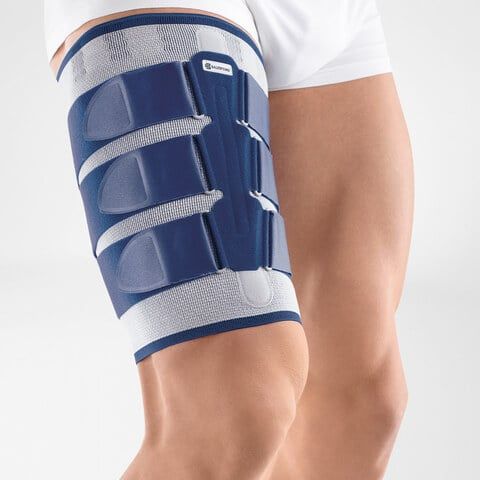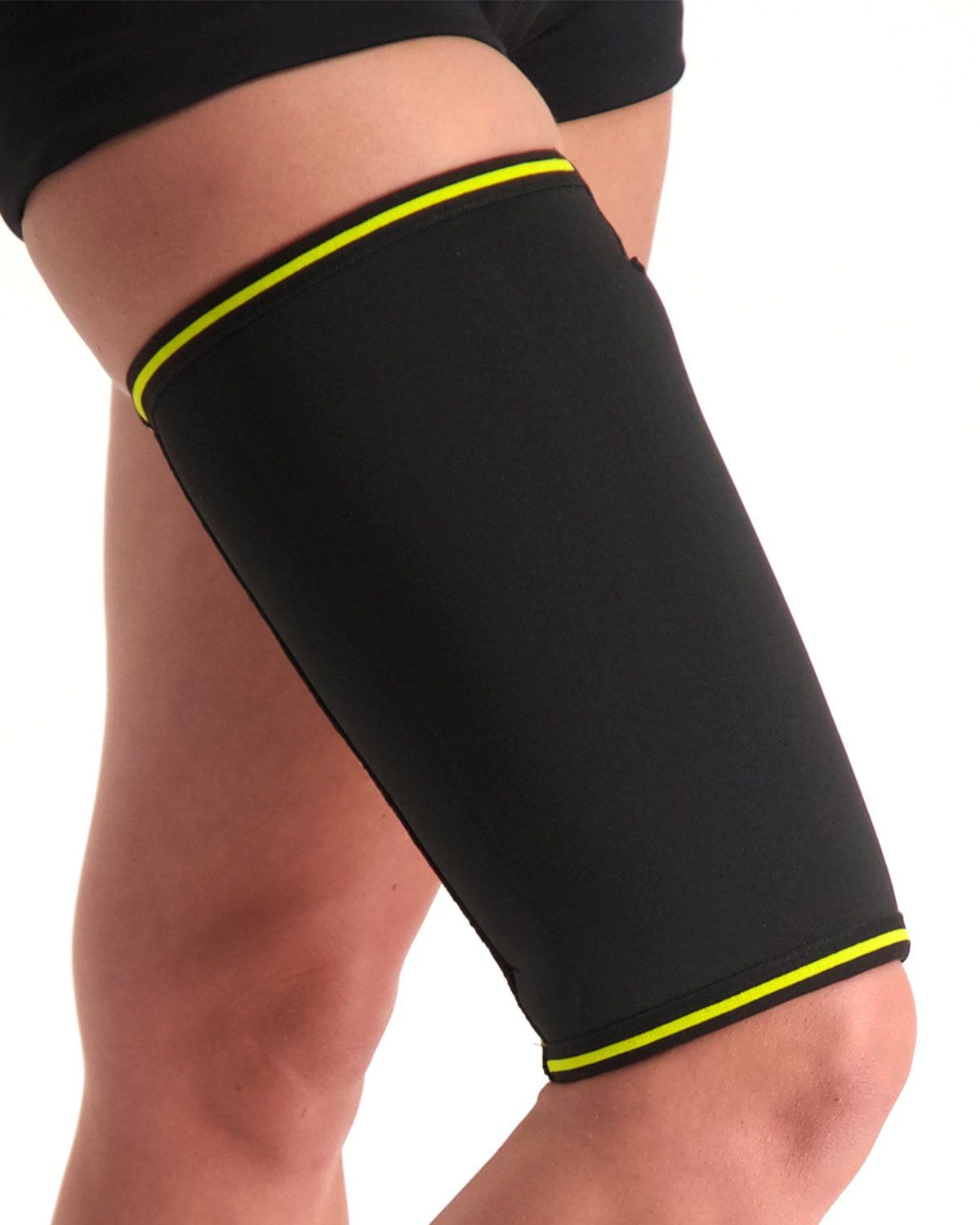Broken thighbone
Do you have a broken thighbone? Then you’ve come to the right place at Podobrace. The products below provide support during recovery from these complaints. Would you like to read more about fractures in the upper leg? Feel free to read on. We’re happy to explain it to you.
What is a broken thighbone?
The upper leg consists of a single bone that runs from the hip to the knee, called the thighbone. The thighbone is known as the longest bone in the human body. It is a very strong bone, which means a lot of force is usually required to break it. Fractures most commonly occur when there are pre-existing conditions that weaken the bones, such as bone cancer, osteoporosis or Paget’s disease. Bone fractures are also common in older men and women, as these are often associated with poor vision, reduced mobility, more brittle bones (osteoporosis), poor balance or severe obesity.

What causes a broken thighbone?
A broken thighbone often occurs due to a fall or, for example, a strong blow to the leg during sports. A car accident can also cause a broken thighbone. In some cases, bone quality deteriorates due to a specific disease or the natural aging process.
What symptoms occur?
Symptoms of a broken thighbone are characterized by severe pain in the upper leg, making it impossible to move or bear weight on the leg. The leg is usually positioned differently than normal. In complicated fractures, the bone may even pierce through the skin. Sometimes the skin around the hip area appears purple due to internal bruising under the skin.

How is a broken thighbone diagnosed?
If the upper leg is swollen, this may not always be immediately visible. An X-ray can show the course and presence of the fracture. Sometimes an MRI scan is performed. This clearly shows the location, severity and direction of the fracture. In adults, a broken thighbone almost always requires surgery, with a few exceptions. The blood flow in the thighbone is very strong, which means patients with a fracture may experience significant internal bleeding. This is usually a reason to operate quickly.
What treatments are available?
During surgery, the broken parts are fixed with implants such as screws, plates, wires and rods. This reduces the risk of deformities and complications, allowing faster recovery and earlier mobility. The goal of the surgery is to realign the broken bone, provide sufficient stabilization and ensure the thighbone can function again as quickly as possible.
A leg fracture can also be stabilized externally, especially when soft tissues (skin, tendons, muscles, nerves and blood vessels) are also damaged. This involves a kind of frame applied with pins inserted into the thighbone. This is mostly used for children with growing bones and for people with an infected wound. After surgery, the trauma surgeon determines whether you can immediately bear weight on the leg or not. If not immediately, it is usually possible after about 6 to a maximum of 12 weeks. In most cases, you are already allowed to start exercising and try walking without bearing weight using crutches. Full and pain-free use of the leg usually takes longer, approximately 3 to 6 months or even more.
Patients often also experience hip or knee complaints due to changes in weight-bearing and gait patterns. The thigh brace is an ideal tool to help you during recovery. This brace offers the right support and protection while also being extremely comfortable to wear.

- Physiotherapist
- Sports podiatrist
- Manual therapist
- Podopostural therapist
- Myofascial dry needling specialist






